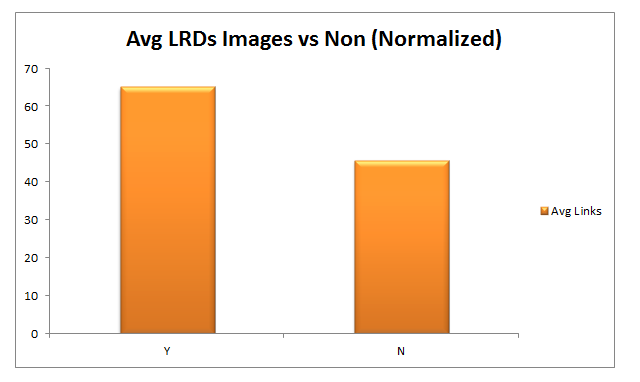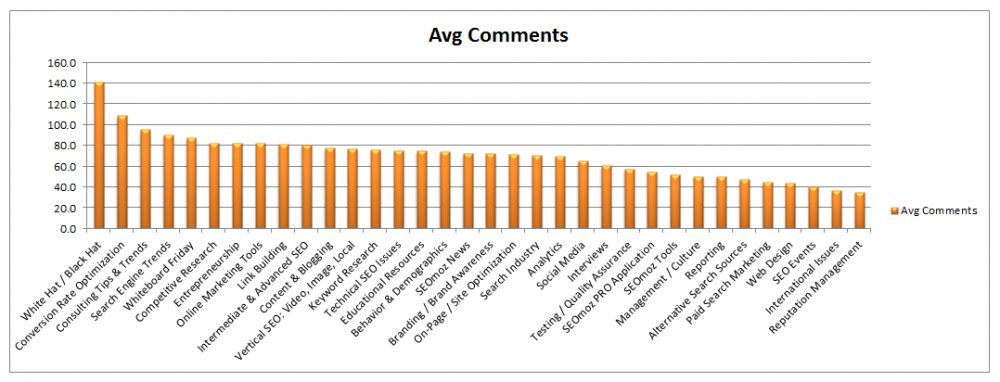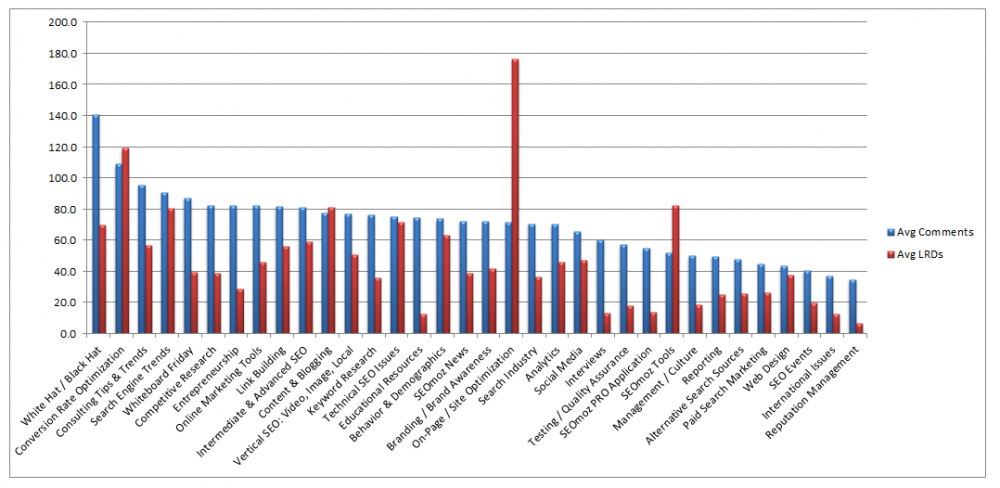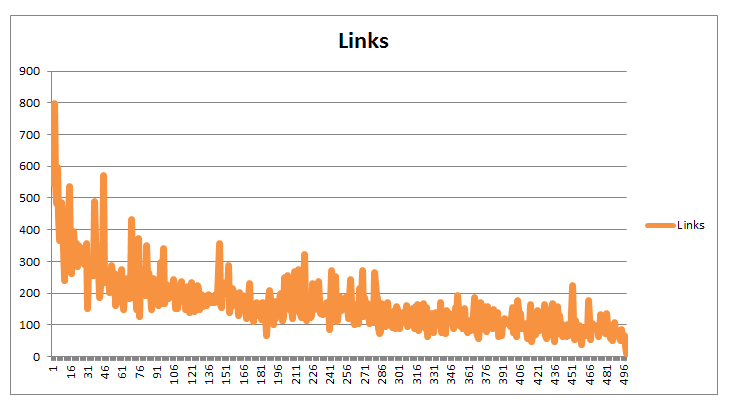
Do you get peeved by those Facebook updates, tweets and posts about how hard it is to build links today? Or do you incessantly complain yourself?
With all the recent Google algorithm updates, the strategies we’ve come to get used to don’t have the same effect anymore. However, what grumblers may not realize is that adapting to these changes can spare them from their link building difficulties. SEO has evolved, and so should our strategies.
Shift in SEO
As the Internet matures, so does the sophistication of the indexing process of search engines. For websites to stay competitive, their focus needs to move toward highly valuable content mixed with social media and updated SEO.
It’s easy to visualize how to integrate high-quality content into your website. You publish well-constructed articles and videos several times a week and boom! Up the search engine rankings you go, right?
But it’s not as simple as that. Content can come in the form of blog posts, videos, white papers, case studies and more, but
what specific content attracts links in 2012? Trust me, you don’t want to expend time and effort in content marketing/link building strategies that are so two years ago.
Below is a compilation of stats and figures that examine different forms of content and how much link juice they receive post-Panda and Penguin.Some of these numbers were gathered by John Doherty of SEOmoz. Check out his article
here.
What Kind of Content Gets Links in 2012?
Here’s an excerpt from Doherty’s post to better explain the data:
Back in 2009, Casey Henry wrote two of the greatest posts ever on SEOmoz – What Makes A Link Worthy Post – Part 1 and What Makes A Link Worthy Post – Part 2. Since we\’re getting close to three years since those posts went live and the SEO world has changed considerably, some of us thought that it was about time to pull some new numbers and see how the community has changed in regards to what people link to.
Just like Casey\’s posts, I have pulled the individual linking root domains (LRDs) instead of the total link counts, which gives us a better picture of how wide content spreads since we are eliminating the fact that one site could have the link on 1,000 pages.
I have done this for just the posts since Casey\’s Part 2 went live on November 4th, 2009. I also took a random sample of 500 posts since then and pulled the link metrics for them.
A quick reminder: these empirical bits of information won’t guarantee you’ll rank well. We’re just showing you useful data you’re free to use. You might want to test them out before implementing to your site.
This one\’s probably a no-brainer. Do articles that contain images garner more organic links than articles sans pictures?
 Source
Source
Yes. The numbers say so.
Great content always wins, but articles and blog posts with images look a lot more alive. Quick tip: make your images colorful and relevant to the content.
Doherty also examined whether the number of comments on a piece of content has a direct relation to the amount of links. Do we have to encourage discussion to increase the chances of gathering links?
First off, here\’s a look at content categories within SEOmoz that receive the most comments.
 Source
Source
And here\’s a visual representation of how links may be correlated to number of comments.
 Source
Source
While a considerable degree of correlation exists, it\’s not enough to justify that we should encourage the community to leave comments for the sake of links.
Moreover, there are plenty of other reasons to invite people to comment aside from link building. Comments are a sign of activity. They add value and take the discussion further. Posts without user discussion look like a ghost town.
There may also be a connection between a post\’s amount of content and the links it receives. There\’s a section of the Internet that loves reading long pieces of writing, but let\’s rely on data to see if longer articles do receive more links than short writings.
 Source
Source
These findings provide another reason to keep on releasing longer content.On a sidenote, with longer posts, your articles can also be surrounded by more relevant content.
On the face of it, outbound links don’t seem to have a direct relation to how many inbound links you gather. After all, you can’t be so sure external websites will link to you unless your site or blog is Internet famous.
To clear things up, let’s let the data speak.
 Source
Source
While it shows that there’s considerable connection between the outbound links within SEOmoz and inbound links, you simply just can’t conclude that you’ll get tons of backlinks since you linked out.
This is perhaps the highlight of the article. What content brings in the most links? What forms of content should we focus our time and energy on? For this graph, the different media types are divided into these three categories: lists, images and video.
 Source
Source
WBF stands for Whiteboard Friday, a weekly thing in SEOmoz where they share valuable insights and helpful tips for the SEO community. Each Whiteboard Friday includes a post with a video and guarantees high content quality, so that may be another linking factor – WBF videos get more links than non-WBF videos.
So there you have it. Based on the data, content with images only get the most inbound links, even more than posts with all three media types.
Link Building Pitfalls to Avoid

Ever since the Panda and Penguin updates, search engine optimization hasn\’t been the same. So many link building strategies no longer work in the post-Panda/Penguin world.
The following link building strategies are no longer the cat\’s pajamas, so it\’s best to
avoid them and spend your time on updated tactics.
1. Unusual Anchor Text
It used to be that keyword-rich anchor text would get your website blazing through the search engines. This has changed because of the latest Google algorithm updates. Your site\’s search engine position could plummet if you have a bunch of unnatural-looking anchor texts.
Avoid this by
using different kinds of keywords as anchor text, such as long tail keywords and head term keywords, and don\’t make your anchor text repetitive.
2. Low-Quality Content
The Internet is filled with content made solely for building links. Distinguishing low-caliber articles is very easy, and they\’re found all over the Web. The recent search engine changes aimed to minimize poorly constructed content by clamping down on link farms, pages without relevant content and scrapers. Even article spinning runs the risk of getting de-valued.
Stay on the safe side because
Google Panda and Penguin reward sites with good content. Similarly, don\’t link to low-quality pages.
 3. Exact Match Domains
3. Exact Match Domains
Before Panda, SEOs were all about making sure their domains contain their main keyword. As an example, seo.com has an exact match domain because it contains a keyword websites want to rank for.
This trend no longer applies today. Google doesn\’t instantly penalize this type of domain, though. They first look at whether or not the site offers high-quality content,
and then penalize it if it fails to meet standards.
4. Sidebar and Footer Links
Links at the sidebar and footer used to be reliable places to insert links. Now, it could become the bane of your site\’s existence now that Panda and Penguin are breathing down everyone\’s neck. Before the major search engine updates, websites could sell other websites links that were placed in the footer or sidebar area, and Google didn\’t like that.
Placing a link in a site\’s footer is a form of advertising, but this comes across as paid advertising, which is a total no-no to search engines.
And oh, one more thing…
Always encourage people to chip in their thoughts and leave comments, but
don\’t expect everyone to give positive comments. There will always be someone who disagrees, even to the point of giving destructive feedback. And don\’t forget the ever-present Internet trolls.
The most important thing to remember is:

- Just because one comment out of a hundred said that you\’re a horrible content creator doesn\’t mean the end of the world. Remember, that was just one negative feedback against a ton of positive ones.
- Try not to respond to negative comments immediately. People tend to say harsh things when fired up by unpleasant feedback. Take some time to cool off, and then respond.
- Another rule: respond politely, even to trolls and haters. If a comment ticked you off, collect yourself and respond in a civil fashion. If the indignant feedback is due to disappointment from your business, products or services, try to resolve the customer\’s issue. Do not argue back.
- Don\’t ignore or delete dissenting comments. That might push the irate reader to vent their anger elsewhere, like a public social network.
 Do you get peeved by those Facebook updates, tweets and posts about how hard it is to build links today? Or do you incessantly complain yourself?
With all the recent Google algorithm updates, the strategies we’ve come to get used to don’t have the same effect anymore. However, what grumblers may not realize is that adapting to these changes can spare them from their link building difficulties. SEO has evolved, and so should our strategies.
Do you get peeved by those Facebook updates, tweets and posts about how hard it is to build links today? Or do you incessantly complain yourself?
With all the recent Google algorithm updates, the strategies we’ve come to get used to don’t have the same effect anymore. However, what grumblers may not realize is that adapting to these changes can spare them from their link building difficulties. SEO has evolved, and so should our strategies.
 Source
Yes. The numbers say so.
Great content always wins, but articles and blog posts with images look a lot more alive. Quick tip: make your images colorful and relevant to the content.
Source
Yes. The numbers say so.
Great content always wins, but articles and blog posts with images look a lot more alive. Quick tip: make your images colorful and relevant to the content.
 Source
And here\’s a visual representation of how links may be correlated to number of comments.
Source
And here\’s a visual representation of how links may be correlated to number of comments.
 Source
While a considerable degree of correlation exists, it\’s not enough to justify that we should encourage the community to leave comments for the sake of links.
Moreover, there are plenty of other reasons to invite people to comment aside from link building. Comments are a sign of activity. They add value and take the discussion further. Posts without user discussion look like a ghost town.
Source
While a considerable degree of correlation exists, it\’s not enough to justify that we should encourage the community to leave comments for the sake of links.
Moreover, there are plenty of other reasons to invite people to comment aside from link building. Comments are a sign of activity. They add value and take the discussion further. Posts without user discussion look like a ghost town.
 Source
These findings provide another reason to keep on releasing longer content.On a sidenote, with longer posts, your articles can also be surrounded by more relevant content.
Source
These findings provide another reason to keep on releasing longer content.On a sidenote, with longer posts, your articles can also be surrounded by more relevant content.
 Source
While it shows that there’s considerable connection between the outbound links within SEOmoz and inbound links, you simply just can’t conclude that you’ll get tons of backlinks since you linked out.
Source
While it shows that there’s considerable connection between the outbound links within SEOmoz and inbound links, you simply just can’t conclude that you’ll get tons of backlinks since you linked out.
 Source
WBF stands for Whiteboard Friday, a weekly thing in SEOmoz where they share valuable insights and helpful tips for the SEO community. Each Whiteboard Friday includes a post with a video and guarantees high content quality, so that may be another linking factor – WBF videos get more links than non-WBF videos.
So there you have it. Based on the data, content with images only get the most inbound links, even more than posts with all three media types.
Source
WBF stands for Whiteboard Friday, a weekly thing in SEOmoz where they share valuable insights and helpful tips for the SEO community. Each Whiteboard Friday includes a post with a video and guarantees high content quality, so that may be another linking factor – WBF videos get more links than non-WBF videos.
So there you have it. Based on the data, content with images only get the most inbound links, even more than posts with all three media types.
 Ever since the Panda and Penguin updates, search engine optimization hasn\’t been the same. So many link building strategies no longer work in the post-Panda/Penguin world.
The following link building strategies are no longer the cat\’s pajamas, so it\’s best to avoid them and spend your time on updated tactics.
Ever since the Panda and Penguin updates, search engine optimization hasn\’t been the same. So many link building strategies no longer work in the post-Panda/Penguin world.
The following link building strategies are no longer the cat\’s pajamas, so it\’s best to avoid them and spend your time on updated tactics.
 3. Exact Match Domains
3. Exact Match Domains
